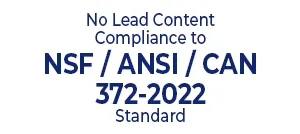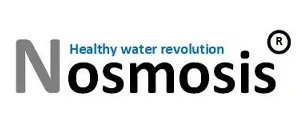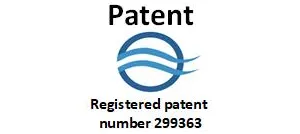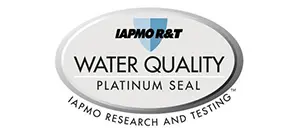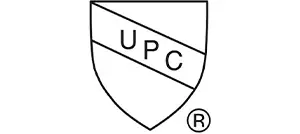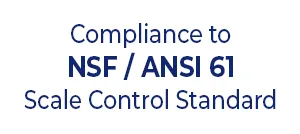In today’s world where access to clean water is considered a fundamental right, many assume their tap water is completely safe. However, the reality is more complex: even crystal‑clear, odorless water can harbor numerous contaminants that impact your health, damage your home appliances, and affect the taste of everything you prepare with it.
The question of whether to invest in a water purifier goes beyond simple water purity—it’s a decision that affects your family’s health, daily convenience, environmental footprint, and long‑term peace of mind. This comprehensive guide explores fifteen evidence‑based reasons why a water purifier might be essential for your home, the available purification technologies, and how to select the optimal system for your specific needs.
The Hidden Truth About Your Drinking Water
1. Tap Water Contains More Contaminants Than You Realize
Municipal water treatment facilities work diligently to reduce dangerous pathogens and certain chemicals, but they cannot filter out everything. According to extensive research by the Environmental Working Group (EWG), more than 320 different contaminants have been detected in U.S. public water systems. These include potentially harmful substances like lead, arsenic, PFAS (“forever chemicals”), pesticide residues, and pharmaceutical compounds.
The EPA regulates only about 90 contaminants, meaning hundreds of others remain unregulated and untested in routine water quality assessments. A water purifier can address this significant gap in protection. (Source: EWG Tap Water Database)
2. Chlorine and Chloramines: Necessary Disinfectants with Drawbacks
While chlorine and chloramines effectively kill waterborne pathogens, their presence in drinking water isn’t without consequences. Long‑term consumption and exposure to chlorinated water has been associated with:
- Respiratory irritation and potential asthma exacerbation
- Dry, itchy skin and hair damage
- Increased risk of bladder cancer with long‑term exposure
- Formation of disinfection by‑products (DBPs) when chlorine reacts with organic matter
Modern water purifiers can effectively reduce these chemicals while preserving the beneficial aspects of your water. (Source: CDC – Chlorine Residual Testing; WHO Guidelines for Drinking‑water Quality)
3. The Fluoride Debate: Benefits vs. Risks
Fluoride addition to public water remains one of the most contested water‑treatment practices. While it has demonstrably reduced tooth‑decay rates, excessive fluoride consumption can lead to:
- Dental fluorosis (white spotting, staining, or pitting of tooth enamel)
- Skeletal fluorosis in extreme cases (bone pain and damage)
- Potential neurological effects, particularly during critical developmental periods
For those seeking precise control over their fluoride intake—especially families with young children or individuals with certain health conditions—a water purifier with fluoride‑reduction capabilities provides that control. (Source: National Institute of Environmental Health Sciences; American Dental Association)
4. Heavy Metal Contamination: A Silent Health Threat
Heavy metals represent some of the most dangerous water contaminants due to their ability to bioaccumulate in the body and cause chronic health problems.
For example, lead is considered one of the most hazardous contaminants in water—not only due to the risk of ingestion, but also because of its potential to enter the body during daily activities like showering.
Skin Absorption: Lead can be absorbed directly through the pores of the skin, especially during hot showers when the pores are open, increasing the risk of direct entry into the bloodstream.
Inhalation of Vapors: Showering in water contaminated with lead may produce steam that carries toxic lead particles. These particles can be inhaled into the lungs, leading to prolonged exposure and accumulation in the body over time.
Additional common sources include:
- Lead from aging infrastructure, old pipes, and historical plumbing fixtures
- Arsenic from natural deposits, industrial processes, and agricultural runoff
- Mercury from industrial pollution and natural deposits
- Cadmium from industrial waste and old galvanized pipes
These metals have been linked to developmental issues, neurological problems, kidney damage, and increased cancer risk. Advanced filtration systems can effectively reduce these contaminants, protecting your family from their insidious effects. (Source: WHO – Chemical Hazards in Drinking‑water; EPA – Lead and Copper Rule)
5. Hard Water: More Than Just a Nuisance
Water hardness—caused by high concentrations of calcium and magnesium—affects approximately 85% of American homes. While not generally harmful to health, hard water creates numerous problems:
- Scale buildup in pipes, reducing water flow and efficiency
- Decreased lifespan of water‑using appliances (25–40% shorter)
- Increased energy costs due to reduced heating efficiency (up to 25% more)
- Soap‑scum formation requiring more cleaning products
- Dry skin and dull, brittle hair
- Less effective washing of clothes and dishes
Water‑conditioning components in modern purification systems can address these issues, saving you money and frustration. (Source: Water Quality Association; U.S. Geological Survey)
6. Microplastics: The Emerging Contaminant Crisis
Recent scientific investigations have revealed the alarming presence of microplastics in drinking water worldwide. These tiny plastic particles (less than 5 mm) come from the breakdown of larger plastic items, synthetic clothing fibers, and microbeads from personal‑care products.
Research suggests potential health concerns including:
- Inflammatory responses in tissues
- Disruption of the gut microbiome
- Potential for carrying other contaminants into the body
- Hormone disruption and oxidative stress
Advanced filtration systems with sub‑micron capabilities can capture these invisible plastic particles before they enter your body. (Source: World Health Organization; Environmental Science & Technology Journal)
7. Taste and Odor: The Sensory Benefits of Purified Water
Water quality dramatically affects your sensory experience. Common taste and odor issues include:
- Chlorine taste and smell from disinfection processes
- Metallic flavors from pipe corrosion
- Earthy or musty tastes from algal blooms in source water
- Sulfur (rotten‑egg) smells from hydrogen sulfide
- Salty taste from high mineral content or saltwater intrusion
Purification significantly improves these sensory qualities, making water more appealing and encouraging proper hydration. This sensory improvement extends to everything prepared with your water, from coffee and tea to soups and sauces. (Source: American Water Works Association; Water Research Foundation)
8. Culinary Enhancement: The Chef’s Secret Ingredient
Professional chefs have long recognized that water quality fundamentally affects food preparation. Purified water provides multiple culinary benefits:
- Enhanced flavor clarity in beverages like coffee, tea, and homemade juices
- More consistent cooking results for pasta, rice, and other grains
- Better rising and texture in baked goods
- Improved fermentation for bread, kombucha, and other cultured foods
- Cleaner‑tasting ice cubes
- More vibrant colors when blanching vegetables
By reducing chlorine, metals, and other taste‑affecting compounds, water purification elevates your everyday cooking to a new level of quality. (Source: Culinary Institute of America; Journal of Food Science)
9. Appliance Protection: Extending Lifespans and Performance
Water‑using appliances represent significant household investments that deserve protection. Purified water helps by:
- Helping decrease scale buildup in water heaters, potentially doubling their lifespan
- Protecting expensive coffee machines from mineral deposits
- Reducing maintenance needs for dishwashers and washing machines
- Helping reduce staining and mineral spots on fixtures and glassware
- Improving the efficiency and effectiveness of humidifiers and steam irons
The cost of a quality water‑purification system is often recovered through extended appliance lifespans and reduced repair frequency. (Source: Appliance Magazine; Consumer Reports)
10. Environmental Impact: The Bottled Water Alternative
The environmental case for home water purification is compelling:
- Americans use approximately 50 billion plastic water bottles annually, with only about 23% recycled
- Producing bottled water requires up to 2,000 times the energy of producing tap water
- The transportation carbon footprint of bottled water is substantial
- Microplastic shedding from plastic bottles adds to contamination issues
A home purification system dramatically reduces this environmental impact while providing water that’s often of higher quality than bottled alternatives. (Source: Earth Policy Institute; Pacific Institute)
11. Special Health Considerations: Vulnerable Populations
Certain groups face heightened risks from water contaminants:
- Pregnant women (risk of developmental effects from lead, nitrates, and certain chemicals)
- Infants and young children (more vulnerable to contaminants due to developing systems)
- Immunocompromised individuals (higher risk from waterborne pathogens)
- People with chronic conditions like kidney disease or chemical sensitivities
- Elderly individuals (may have reduced detoxification capacity)
For these populations, comprehensive water purification provides an extra layer of health protection. (Source: CDC – Vulnerable Populations; American Academy of Pediatrics)
12. Emerging Contaminants: Staying Ahead of Regulations
Regulatory standards often lag behind scientific discovery. Emerging contaminants of concern include:
- PFAS (per‑ and polyfluoroalkyl substances)—industrial chemicals linked to cancer and immune dysfunction
- Pharmaceutical residues from improperly disposed medications
- Personal‑care‑product chemicals (parabens, phthalates, etc.)
- Pesticide and herbicide residues
- Toxic gases like ammonia
- Hormone disruptors and endocrine‑active compounds
Advanced water‑purification systems can address many of these contaminants before they become regulated, providing proactive protection. (Source: EPA Contaminant Candidate List; Environmental Health Perspectives)
13. Well Water Considerations: Unique Challenges
Private‑well owners face different challenges than those on municipal systems:
- No regulatory oversight or routine testing requirements
- Potential agricultural‑runoff contamination (nitrates, pesticides)
- Natural mineral contamination (arsenic, radon, uranium)
- Bacterial contamination risks, particularly after flooding or nearby septic issues
- Radioactive and toxic gases like radon
- Seasonal quality fluctuations
For well owners, a robust purification system isn’t just a convenience—it’s an essential safety measure. (Source: CDC Private Well Resources; U.S. Geological Survey)
14. Economic Analysis: The True Cost Comparison
When evaluated comprehensively, home water purification often proves economically advantageous:
- A family of four spending $8/week on bottled water spends over $1,600 in five years
- Reduced appliance maintenance and replacement costs save $300–700 annually
- Lower usage of cleaning products and personal‑care items (lotions, conditioners)
- Potential reduction in healthcare costs related to waterborne contaminants
- Higher home value with installed premium filtration systems
The initial investment in quality purification typically pays for itself within 1–3 years, depending on household size and water‑consumption patterns. (Source: Consumer Reports; National Association of Realtors)
15. Global Water Quality Trends: A Growing Concern
Global water quality faces increasing challenges:
- Aging infrastructure in many developed nations
- Industrial contamination in rapidly developing economies
- Agricultural intensification increasing nitrate and pesticide runoff
- Climate change altering water cycles and concentration of pollutants
- Pharmaceutical pollution from growing healthcare sectors
A home purification system provides resilience against these deteriorating conditions and future uncertainties. (Source: UN Environment Programme; World Resources Institute)
Understanding Water Purification Technologies
1. Reverse Osmosis (RO) Systems
How it works: Forces water through a semipermeable membrane that blocks contaminants while allowing water molecules to pass.
Pros:
- Highly effective at reducing most contaminants (95–99% reduction)
- Decreases heavy metals, fluoride, nitrates, arsenic, and most microorganisms
- Long‑established technology
Cons:
- Produces wastewater (typically 1–4 gallons per gallon produced)
- Removes beneficial minerals along with contaminants
- Slower water‑production rate
- Requires adequate water pressure to function
- Bacterial growth can occur due to direct connection to the sewer
Ideal for: Homes with serious contamination concerns, especially regarding heavy metals, fluoride, or dissolved solids.
2. Activated Carbon Filtration
How it works: Uses specially treated carbon with vast surface area to trap contaminants through adsorption.
Pros:
- Excellent for improving taste and odor
- Effectively reduce chlorine, VOCs, pesticides, and some heavy metals
- No wastewater production
- Relatively inexpensive
- Preserves beneficial minerals
Cons:
- Less effective against dissolved minerals, fluoride, and some heavy metals
- Requires regular filter replacement
- Doesn’t treat harmful gases
- Cannot sufficiently reduce microbial contaminants without additional treatment
Ideal for: Most urban homes with generally safe municipal water that needs taste improvement or chlorine reduction.
3. UV Purification Systems
How it works: Utilizes ultraviolet light to disrupt the DNA of microorganisms, reducing their ability to reproduce.
Pros:
- Highly effective against bacteria, viruses, and parasites (99.99%+)
- No chemicals added
- No change to water taste or chemistry
- Low operating cost
Cons:
- No effect on chemical contaminants, heavy metals, or dissolved solids
- Requires clear water to be effective (often used with pre‑filtration)
- Requires electricity
- Effectiveness reduced by turbidity or scale buildup
- Soil‑based bacteria are UV‑resistant
- Converts nitrate to nitrite (NO₃⁻ → NO₂⁻), posing health risks
Ideal for: Supplemental disinfection, especially for well water with potential microbial contamination.
4. Ion Exchange Systems
How it works: Exchanges problem ions (like calcium and magnesium) with more desirable ones (usually sodium).
Pros:
- Excellent for softening hard water
- Helps decrease scale buildup
- Improves soap lathering and washing effectiveness
- Can help reduce certain heavy metals
Cons:
- Adds sodium to water (consideration for those on sodium‑restricted diets)
- Does not significantly reduce organic contaminants or microorganisms
- Requires periodic regeneration and salt addition
- Can be less environmentally friendly due to brine discharge
Ideal for: Homes with hard‑water issues, particularly those experiencing scale buildup and soap‑effectiveness problems.
- Advanced Multi‑Stage Systems (Like TipaTech T‑18 and LotusDY)
How they work: Combine multiple technologies for comprehensive filtration.
*Patented Gas‑Release Technology: Reduce harmful gases like radon and hydrogen sulfide that no other system does
*Sub‑Micron Filtration: Captures contaminants down to 0.007 microns (99% reduction of bacteria, viruses, microplastics)
*Mineral Retention and Enhancement: Preserves and adds beneficial minerals like magnesium for optimal health
*Eco‑Friendly Design: The LotusDY’s zero‑waste design and advanced patented technology deliver eco‑friendly, energy‑efficient water purification that conserves water, requires no electricity, and traps contaminants separately to help reduce environmental discharge.
*Comprehensive Protection: Addresses virtually all major water‑quality concerns in a single integrated system
*Energy Efficiency: Requires no electricity, reducing both environmental impact and operating costs
Ideal for: Homeowners seeking complete protection against the full spectrum of potential contaminants while maintaining mineral‑rich, great‑tasting water.
Choosing the Right Water Purification Solution
Step 1: Assess Your Water Quality
Before investing in any system, understand your specific water challenges:
- Review your local water‑quality report (Consumer Confidence Report)
- Consider professional water testing, especially for well water
- Identify specific concerns: taste, hardness, specific contaminants, etc.
Step 2: Evaluate Your Household Needs
Consider factors beyond basic filtration:
- Daily water‑consumption requirements
- Space availability for system installation
- Budget constraints (initial and ongoing maintenance)
- Environmental priorities
- Special health considerations
Step 3: Compare System Capabilities
Match technologies to your specific concerns:
- Reverse Osmosis for contaminant reduction
- Carbon filtration for taste and odor
- Water softening for hardness issues
- UV for microbial protection
- Multi‑stage systems like TipaTech T‑18 or LotusDY for comprehensive protection
Step 4: Consider Installation and Maintenance
Understand the practical aspects:
- Professional vs. DIY installation options
- Filter‑replacement schedules and costs
- Space requirements and aesthetic considerations
- Warranty coverage and service availability
Conclusion: The Value of Purified Water
The question “Do I need a water purifier?” ultimately depends on your specific circumstances, water source, and health priorities. However, given the widespread presence of contaminants, the limitations of municipal treatment, and the numerous benefits of purified water, most households would benefit significantly from some form of water purification.
Systems like the TipaTech T‑18 and LotusDY represent the cutting edge of comprehensive water purification, addressing the full spectrum of water‑quality concerns while preserving beneficial aspects of your water. Their advanced technology provides protection against both well‑understood contaminants and emerging threats that conventional systems may miss.
With the right water‑purification system, you gain more than just clean water—you invest in your family’s health, your home’s integrity, environmental sustainability, and daily quality of life. The question then shifts from “Do I need a water purifier?” to “Which water‑purification system best meets my needs?”
Want personalized guidance on selecting the optimal water‑purification solution for your home? Contact TipaTech today to explore your options and take the first step toward truly clean, healthy, and great‑tasting water.




